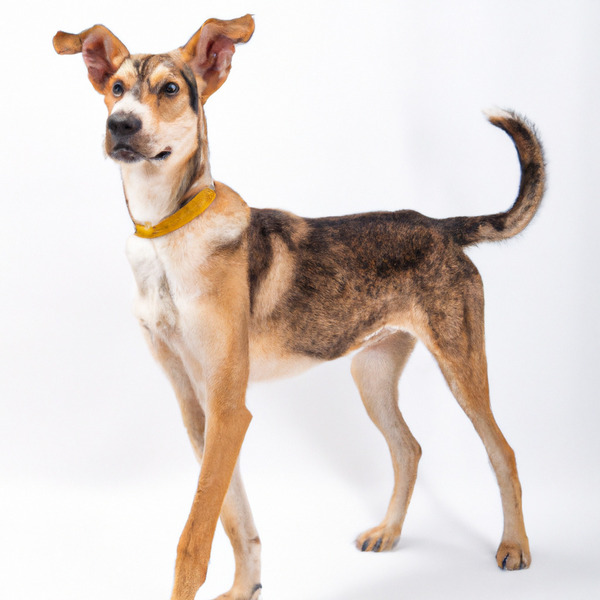Rottmatian vs. Kokoni: Breed Differences and Similarities
Hypoallergenic
Are Rottmatians or Kokonis hypoallergenic, or neither?
Unfortunately, neither Rottmatian nor Kokoni are hypoallergenic, which may not make them the best choice for dog lovers who suffer from pet allergies.
Temperament
What are the personalities of Rottmatian and Kokoni dogs?
Active
Playful
Independent
Energetic
Protective
Alert
Sensitive
Courageous
Intelligent
Friendly
Outgoing
Loyal
Fearless
Good-natured
Gentle
Lively
Cheerful
Amiable
Devoted
Protective
Loving
Intelligent
Trainable
Shedding Level
Do Rottmatians shed more than Kokonis, or which breed sheds more, Rottmatians or Kokonis?
Rottmatians are heavy shedders, but regular brushing can help manage shedding and promote a healthy coat.
Kokonis are moderate shedders, but regular brushing can reduce shedding and maintain coat health.
Origin
What is the origin of Rottmatian and Kokoni dog breeds?
United States
Malta
Ancestry
What are the origins of Rottmatian and Kokoni breeds?
Rottweiler and Dalmatian
Unknown
Date of Birth
When were Rottmatian and Kokoni breeds first developed?
2000s
Unknown
Eye Color Possibilites
What are the eye colors of Rottmatian and Kokoni dogs?
Brown
Hazel
Brown
Amber
Nose Color Possibilites
What are the natural nose colors of Rottmatian and Kokoni?
Black
Black
Brown
Coat Color Possibilites
What are the natural colors of the coat for Rottmatian and Kokoni breeds?
Black
Brown
Red
White
Pied
Sable
Brindle
Black
Brown
Red
Isabella
Fawn
Pied
White
Coat Length
What is the typical coat length for Rottmatian and Kokoni breeds?
Rottmatians have coats that can be either short or medium in length.
Kokonis have medium-length coats.
Coat Density
What is the density of the coat of Rottmatian and Kokoni?
Coat Texture
What is the hair texture of Rottmatian and Kokoni?
Straight
Wavy
Litter Size
What is the usual litter size for Rottmatian and Kokoni?
A Rottmatian can have a litter of 8-12 puppies on average. However, it's worth noting that the size of the litters can vary greatly. Factors that can influence litter size include the health of the mother, breeding history, and genetics.
A Kokoni can have a litter of 14-16 puppies on average. However, it's worth noting that the size of the litters can vary greatly. Factors that can influence litter size include the health of the mother, breeding history, and genetics.
Adaptability
Rottmatians are known for their adaptability and can adjust well to different environments and lifestyle changes.
Kokonis are highly adaptable and versatile, making them excellent companions for families and individuals of all lifestyles.
Health Issues
Between Rottmatian and Kokoni, which breed is more prone to health problems?
The Rottmatian and Kokoni breeds are commonly healthy with low vet costs, regular check-ups may not be as necessary but it's important to keep an eye on their health and have them checked by a veterinarian when needed.
Major Concerns
What are the major health concerns for Rottmatian and Kokoni breeds?
Deafness
Urolithiasis
Hip And Elbow Dysplasia
Subvalvular Aortic Stenosis
Lymphoma
Gastric Dilation Volvulus (GDV) or Bloat
None Known
Minor Concerns
What minor health issues should be kept in mind when owning Rottmatian and Kokoni?
Entropion
Demodectic Mange
Panosteitis
Von Willebrand's Disease
Dalmatian Bronzing Syndrome
None Known
Occasional Tests
What occasional tests are recommended for Rottmatian and Kokoni breeds?
Eye Examination
Skin Evaluation
Blood And Urine Analysis
Diagnostic Imaging
Hearing and Ear Tests
DNA
Regular Full Physical Examination By Veterinarian
Social Needs
Rottmatian vs Kokoni social needs comparison
Rottmatian has very high social needs and requires regular mental and physical stimulation, a job or purpose, and companionship.
Kokoni has average social needs and is less independent than other breeds.
Sleeping Need
Which of the two sleeps the most/least: Rottmatian or Kokoni?
Rottmatians sleep less than other breeds but still need adequate sleep for good health.
Kokonis have moderate energy levels and typical sleep patterns of 12-14 hours per day.
Mouthiness
Mouthiness Comparison: Rottmatian vs Kokoni?
Roaming urge
Rottmatian vs Labrador: Running away tendency?
Prey Drive
Rottmatian or Kokoni - which breed has a higher level of prey drive?
Activity Level
Which breed has higher energy, Rottmatians or Kokonis?
Rottmatians are high-energy dogs. They need mental as well as physical exercise. These dogs require a lot of your involvement and without it they can, and will, become problematic dogs.
Kokonis are medium-energy dogs and typically enjoy socializing and playing casual or even sustained games of chase with other dogs. They may also have occasional periods of barking or racing around the house.
Tolerance of being left alone
Walks per Week
How many miles should Rottmatian or Kokoni walk each week?
There's really no limit to how far you walk your dog as long as they're comfortable. For Rottmatian, it's at least 15 miles / week. Just remember to build distance and stamina gradually over time.
There's really no limit to how far you walk your dog as long as they're comfortable. For Kokoni, it's at least 6 miles / week. Just remember to build distance and stamina gradually over time.
Activity per Day
Do Rottmatians or Kokonis require more exercise?
In general most Rottmatians usually need at least 90 minutes of exercise daily. This can be spread across the day and include all sorts of high-energy activities, like walking, running and playing.
In general most Kokonis usually need at least 45 minutes of exercise daily. This can be spread across the day and include all sorts of high-energy activities, like walking, running and playing.
Grooming
Which breed is easier to maintain in terms of grooming, Rottmatians or Kokonis?
The Rottmatian is a low-maintenance breed that doesn't require much grooming.
The Kokoni has low grooming needs and is easy to maintain.
Brushing Frequency
What is the recommended brushing frequency for Rottmatian and Kokoni dogs?
Rottmatian should be brushed at least once a week. Of course you can give them more frequent brushes if you find that they are still shedding a lot
Ideally, Kokoni should be brushed at least 2 or 3 times a week (preferably daily) improve shedding.
Brushing Tools
What brushing tools are used for Rottmatians and Kokonis?
Slicker Brush
Deshedder
Nail Clipper
Pin Brush
Comb
Nail Clipper
Cups
How much food should be given to Rottmatian or Kokoni in cups?
For an average 70-100 pound (32 - 45 kg) Rottmatian feed 3.5 cups daily. But, keep in mind, the amount you feed is going to be dependent on the quality of the food you are feeding.
For an average 9-18 pound (4 - 8 kg) Kokoni feed 1 cups daily. But, keep in mind, the amount you feed is going to be dependent on the quality of the food you are feeding.
Daily Cost
Which breed has a higher daily cost, Rottmatian or Kokoni?
The average cost of a Rottmatian is somewhere $3.40 - $4.50 per day.
The average cost of a Kokoni is somewhere $1.10 - $1.40 per day.
Monthly Cost
Which breed has a higher monthly cost, Rottmatian or Kokoni?
The average per month expenses of a Rottmatian is between $101 - $134. This makes an average of $1212 - $1608 per year. It will be on the higher side when the dog is still small because it will need more frequent visits to the vet, shots.
The average per month expenses of a Kokoni is between $35 - $42. This makes an average of $420 - $504 per year. It will be on the higher side when the dog is still small because it will need more frequent visits to the vet, shots.
Sensitivity Level
How do Rottmatian and Kokoni compare in sensitivity?
This breed is sensitive and requires gentle handling and a calm home environment.
Kokonis have average emotions and adapt well to different situations.
Apartment Friendly
Which breed is more apartment-friendly: Rottmatian or Kokoni?
Rottmatians can do well in apartments with enough exercise and time outside, but a small yard would be ideal.
The Kokoni is a great apartment dog, thriving with sufficient exercise and time outside as part of their daily routine.
Child Friendly
Do Rottmatians or Kokonis have a friendlier temperament towards children?
Rottmatians are good with kids if socialized and trained from a young age.
Kokonis make excellent family pets for kids due to their gentle, protective nature and calm temperament.
Senior-friendly
Which dog is more suitable as a pet for the elderly - Rottmatian or Kokoni?
Cat Friendly
Do Rottmatian or Kokoni breeds have a better compatibility with cats?
Rottmatians and Kokonis are an average cat friendly dog. They do well with cats, even more if raised together from puppyhood.
Dog Friendly
Which breed is more sociable with other dogs: Rottmatian or Kokoni?
{Rottmatians and Kokonis are average friendly towards other dogs. If they are raised with other dogs, they are likely to get along with them. And, if they are socialized properly from a young age, they will usually be great with other dogs.
Pet friendly
How do Rottmatian or Kokoni dogs interact with other pets?
Stranger Friendly
Which breed is more friendly with strangers: Rottmatian or Kokoni?
Rottmatians are quick to announce strangers and can be standoffish or suspicious.
Kokonis are averagely friendly around strangers but benefit from early socialisation.
Playfulness
Which breed is more playful between Rottmatian and Kokoni?
Rottmatian and Kokoni are playful dogs. So, no matter how busy the day may get, the best thing you can do for Rottmatian and Kokoni is to make time each day to play. It can be as little as 15-20 minutes, and it will mean the world to them.
Trainability
How do the trainability levels of Rottmatians and Kokonis compare?
Rottmatian and Kokoni dogs are known for their ease of training and ability to learn quickly, making them a popular choice for pet owners and trainers alike.
Compare Rottmatian with other breeds

Carkie
Rottmatian vs Carkie

Froodle
Rottmatian vs Froodle

Chorkie
Rottmatian vs Chorkie

Airedale Terrier
Rottmatian vs Airedale Terrier

Afador
Rottmatian vs Afador

Mini St. Bernard
Rottmatian vs Mini St. Bernard

Havachon
Rottmatian vs Havachon

Bassugg
Rottmatian vs Bassugg

Huskita
Rottmatian vs Huskita

Golden Retriever
Rottmatian vs Golden Retriever

Bichon Frise
Rottmatian vs Bichon Frise

Papijack
Rottmatian vs Papijack

